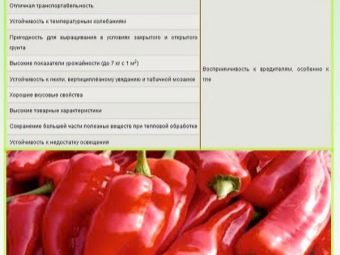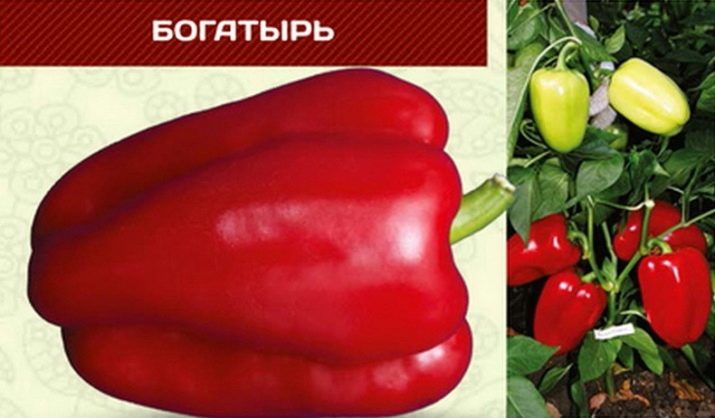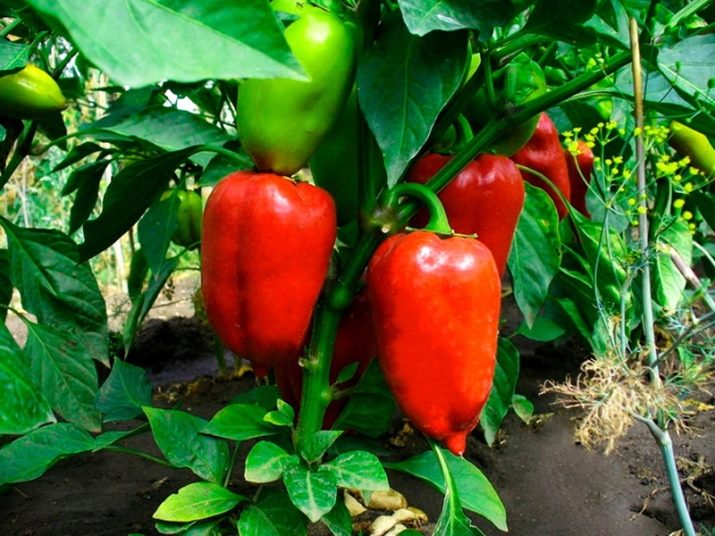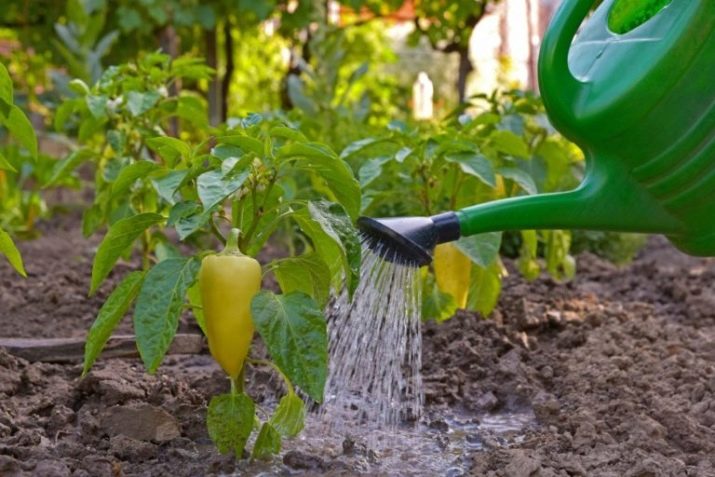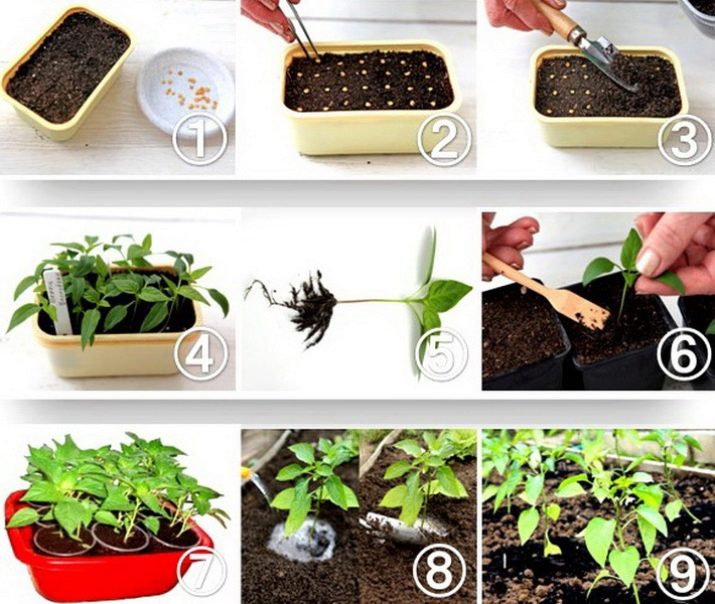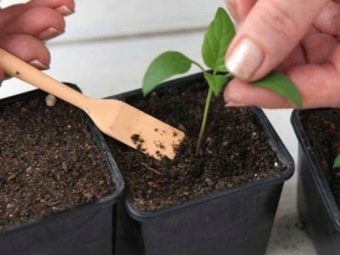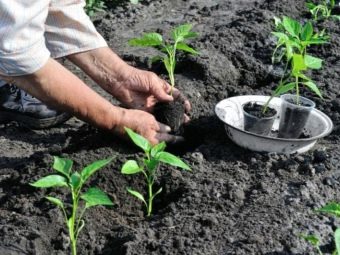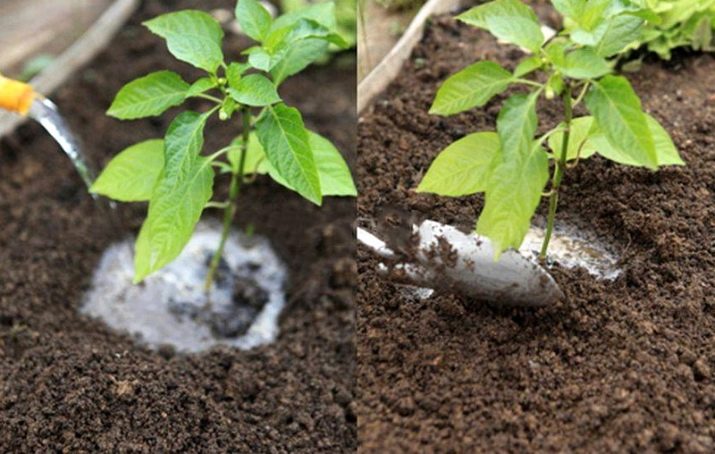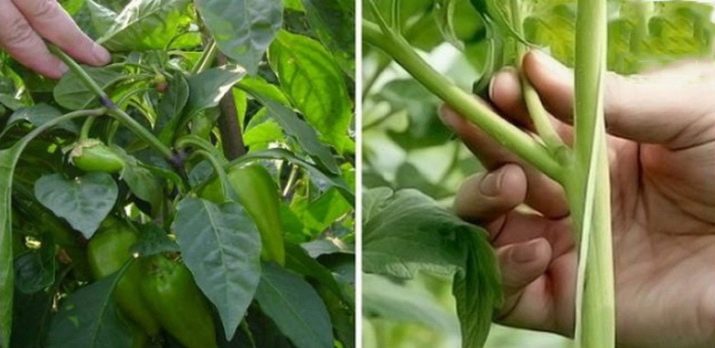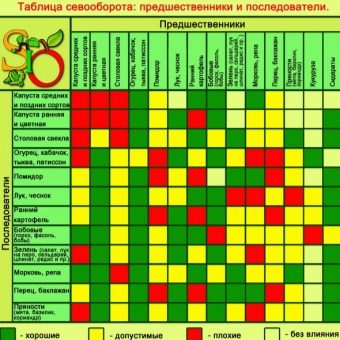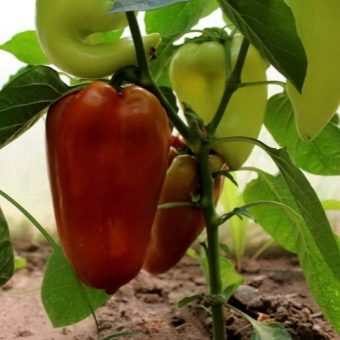Pepper "Bogatyr": characteristics and characteristics of growing
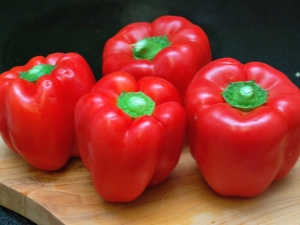
Today, gardeners presented a fairly extensive selection of different varieties of pepper for cultivation. The most popular are the sweet cultures.Among the existing range is worth noting pepper "Hero", which stands out for its size and taste.
Variety description
This vegetable is quite in demand for cultivation in private gardens and in industrial vegetable production, but despite the outstanding characteristics of the variety, agrotechnical measures related to pepper of this variety do not differ in any difficulties. Therefore, its main feature is the high yield and simplicity in the care.
The culture is obliged by its name to the large size of the fruit, rich in glossy red color, as well as high taste. “Bogatyr” is a mid-season crop, distinguished by good immunity to most ailments, as well as an excellent adaptation to various climatic features of a particular region.
The variety can be grown in both open and closed ground. In the southern regions, pepper is most often cultivated in ordinary garden plots; in the middle latitudes of Russia and in the northern regions, it is preferred to be grown in greenhouses and greenhouses.
In Bogatyr Rosreestr was introduced in 1996, and the breeders of an agricultural company located in the Moscow region are considered to be the creators of culture. The recommendations concerning the zoning of the plant, the Lower Volga and North Caucasus regions. However, pepper is also actively grown in Ukraine and Moldova.
The following characteristics are inherent in the Bogatyr variety:
- Vegetables most often have a cone-shaped, slightly lumpy shape, which includes from two to four chambers. However, the appearance of the fruit may vary. A similar difference depends on the seed manufacturer. As a result of planting some peppers can even get a cuboid shape. In addition, the height of culture bushes varies.
- Pepper during its ripening changes color - first, the fruits have a green color, and to achieve technical ripeness - red.
- Thick-skinned pepper, juicy and sweet flesh.
- The weight of one vegetable varies between 80-180 grams with a length of 10 to 18 centimeters. These parameters are also influenced by the manufacturer of the planting material.
- According to its chemical composition, “Bogatyr” is distinguished by a high content of vitamin C. However, the maximum benefit from the vegetable is felt when it is consumed fresh, because with any thermal effect on the product it loses more than half of the beneficial microelements.
- In addition, the variety develops well and bears fruit even in conditions of poor access of light, but sometimes this affects the yield.
- The plant actively blooms, and the ovaries are formed on almost every flower.
- Judging by the reviews, the yield from 1m2 garden is about 7 kilograms.
- The first crop of crops can be obtained closer to August, but Bulgarian pepper is quite resistant to negative temperatures, due to which it is able to bear fruit before the onset of frost.
Advantages and disadvantages
For an objective assessment of the variety "Bogatyr" should focus on the positive and negative qualities of the vegetable culture. The advantages of pepper include:
- the opportunity to grow a rich crop of vegetables in a greenhouse or garden;
- simple agrotechnology;
- presentation of fruits;
- excellent taste characteristics of ripened vegetables;
- resistance of the culture to temperature changes and frost;
- good keeping quality of the harvest, which makes it possible to transport vegetables over long distances;
- Pepper has a universal purpose, so that it can be used fresh or after heat treatment or pickling.
Despite a number of positive features, Bogatyr has some drawbacks:
- the culture does not tolerate drought, therefore it needs proper and regular watering;
- in shaded areas, crop yield may decrease.
How to plant?
Planting sweet pepper is not much different from similar works with other varieties of pepper.However, competently carried out stages associated with cultivation will allow in the future to get a good harvest of vegetables. The fundamental point is the preparation of planting material. These activities include a series of consecutive steps:
- The first step is to select the highest quality seeds for planting. It is best to buy material for seedlings, the age of which will not exceed three years, because it has good germination.
- Sorted material is soaked in saline for about half an hour. All grains that have risen to the surface will not sprout, therefore they must be removed.
- After the salt solution, the seeds are soaked in potassium permanganate solution. This procedure is necessary for decontamination.
- To increase the productivity of seeds, they are kept for several hours in a growth stimulator. In this case, Epin will become an effective drug.
Next, the material before planting in the ground must be germinated. To do this, the seeds for a week are sent in a damp gauze and package in a warm place, where the temperature will be maintained at +23 degrees. It is very important to maintain the humidity inside and to give the seeds access to oxygen in order to activate the germination process.
There is an alternative preparation for pepper seeds. It consists in holding the planting material in a thermos with hot water for about 30 minutes. After which the seeds are left for one day in the freezer.
A container for pepper seeds should measure 15x10x10 centimeters. All containers before planting need to handle potassium permanganate. The optimal soil for plants will be the composition of sand, compost, earth and humus. Landing material should be carried out in early March. The technology of performance of work consists of the following stages:
- The soil should fill the container almost to the brim. The seeds are deepened by no more than 1.5 centimeters in steps of two centimeters, after which the containers are covered with foil and left warm in a lit place.
- After 1-2 weeks, the first shoots will appear in the ground, with their snapping, you can remove the covering material. For seedlings during this period, a temperature of no more than +17 is needed for seven days, after which it is necessary to increase the indicators to +23 degrees.
- Oxygen is important for plants, so airing is mandatory. Humidity should be at 70%. After two weeks you can moisten the soil. For irrigation, separated liquid is necessary.
- Fertilizer is injected before bud formation of flowers. Potassium humate solution will be optimal during this period. During flowering, it is better to fertilize seedlings with manganese sulphate, boric acid and zinc sulphate.
- To activate the growth of the roots, pinching the plant at level 5 of the internode is carried out.
For the growth of seedlings need a lot of light, daylight should be about 12 hours. With its deficiency development will occur only in length, and the plant itself will become very thin. An additional source of illumination can be fluorescent or LED lamps, which are located at a distance of 20 centimeters from the culture.
When the peppers start the formation of cotyledonary leaves, the lighting should be continuous for three days.
Quite an important point in the cultivation of seedlings "Bogatyr" is picking. Unfortunately, this variety is difficult to tolerate such interventions. A pick will be needed during the development of two true leaves of a bush. In the course of its implementation, it is necessary to take into account a number of important nuances:
- Tara with seedlings watered abundantly, preparing pots for picks. It is best to opt for small containers - 100-150 ml will be enough. They need to be treated with potassium permanganate.
- Pot soil should be no more than 2/3 of the total volume. It is recommended to use a similar composition of the soil mixture.
- The plant, holding the sheets, carefully along with part of the earth is dug out of the soil and moved to a new container. The root neck should not go deeper into the ground by more than 5 millimeters.
- The plant is irrigated with water so that the earth subsides. If necessary, fill the composition to the prescribed norm. The pots are placed on the windowsill. From above it is necessary to cover them with paper to avoid direct sunlight.
After picking, the plant will need additional feeding. The introduction of fertilizers is carried out two weeks after seating, after the same time, the feeding is repeated. It should be preferred compositions in the liquid state. On sale there are specialized tools for seedlings - “Fortress”, “Fertika Lux” and others.
By the end of April, it is necessary to move the peppers into larger pots by rolling over, saving part of the ground near the root system. The composition of the soil is best left unchanged, however, additional fertilizer is still needed. A composition of 100-150 grams of wood ash and one spoonful of superphosphate is introduced into the soil. A similar amount is needed per 10 kilograms of soil.
The fact that peppers are ready for planting in open ground will be indicated by their size and appearance - the plants must be at least 20 centimeters high with 7 leaves. The best soil for peppers will be weakly acidic earth, for example, loam. Before transplanting seedlings need to harden. To do this, open the windows in the room, after which the pots are placed on the balcony. Immediately before planting on the beds, pots of seedlings are kept outside during the night.
The optimal predecessors of the peppers will be cucumbers, legumes or cabbage. It is important that the average air temperature on the street during this period was about +15 degrees.
The technology and landing scheme involves the following work:
- the site must be re-dig, fertilizing it with compost;
- culture wells are located at a distance of 10 centimeters from each other, the distance between rows is about 40 centimeters;
- it is better to plant the plants in the wells together with a part of the old earth;
- rooting should be carried out taking into account the fact that the root collar will be located underground;
- The wells fall asleep in two stages - after the introduction of the first part of the earth, watering is performed, then the remaining half of the soil is filled.
Care
Properly planned and carried out agrotechnical measures will allow to get a big crop of sweet pepper. The following works are obligatory:
- watering culture;
- regular fertilizer introduction;
- garter bushes pepper;
- pruning plants.
The first watering is carried out at the time of planting the young culture in the ground, the following moisture will need the plant no earlier than after 5-6 days. Approximately the regularity of soil moistening will be once every seven days. During the period of the formation of the fruits, watering the crop is worth twice a week.
To avoid cracking the soil and the formation of a crust on it after watering, the introduction of fluid is carried out on one side, and is loosened from the second ground. The next time the same work is performed in a mirror image. It is very important to introduce only warm moisture into the soil, otherwise culture growth will be slower.
To improve the taste of the fruit plant need feeding. Two weeks after planting, pepper is fertilized with urea and superphosphate. In the development phase of buds, you need to prepare the nutritional composition of the following substances: 1 teaspoon of potassium and urea, two spoons of superphosphate. This amount must be diluted in 10 liters of water.
When the peppers begin to form, in 10 liters of water dilute superphosphate and potassium salt. For one bush "Bogatyr" will need at least one liter of nutrient solution.
When fertilizing cultures with liquid formulations, avoid contact with the green mass of the crop.
If during the ripening period of the peppers the weather is wet, you need to remove the side shoots from the bushes, but they will come in handy during drought, as they contain a large supply of moisture. Garter peppers need after their length exceeds 60 centimeters. This variety has rather fragile stems, therefore it is better to fix each one by installing supports for the bushes.
According to the description of the pepper, the fruits reach technical ripeness on the 130th day after germination. However, biological maturation occurs in about 150 days. Harvested vegetables, when properly stored fresh, will not deteriorate over a period of 1.5-2 months. Variety is perfect for freezing and canning.
Diseases and pests
Culture is notable for its good immunity to the most common diseases, but some diseases still pose a danger to pepper. Most often, the plant suffers from Alternaria, in which leaves form on the leaves, and vegetables are formed with water spots and dark bloom.
To reduce the risk of morbidity, it is recommended to adhere to the principles of crop rotation and plant a variety on the same plot no earlier than in 3-4 years. For the treatment of affected bushes it is necessary to treat with Bordeaux mixture.
If peppers rotting lower stem, this sign may indicate the development of black legs. Such crops should be removed from the site, and the soil should be disinfected with copper sulfate.
Septoria is manifested by a dark border on foliage and fruits. For the treatment of the disease is used "Fitosporin".
For the Bogatyr variety, some insects are dangerous, such as aphids, slugs, or spider mites. An effective means of pest control is treatment of bushes with karbofos. To destroy slugs, bitter ground pepper is added to the soil, it needs 2-3 grams per square meter, and the spider mite can be removed with a solution based on garlic, onions and dandelion diluted with water and liquid soap. To prepare the composition will need 5 grams of soap, 10 liters of water and 250 grams of the remaining ingredients.
How to process peppers, see the next video.


